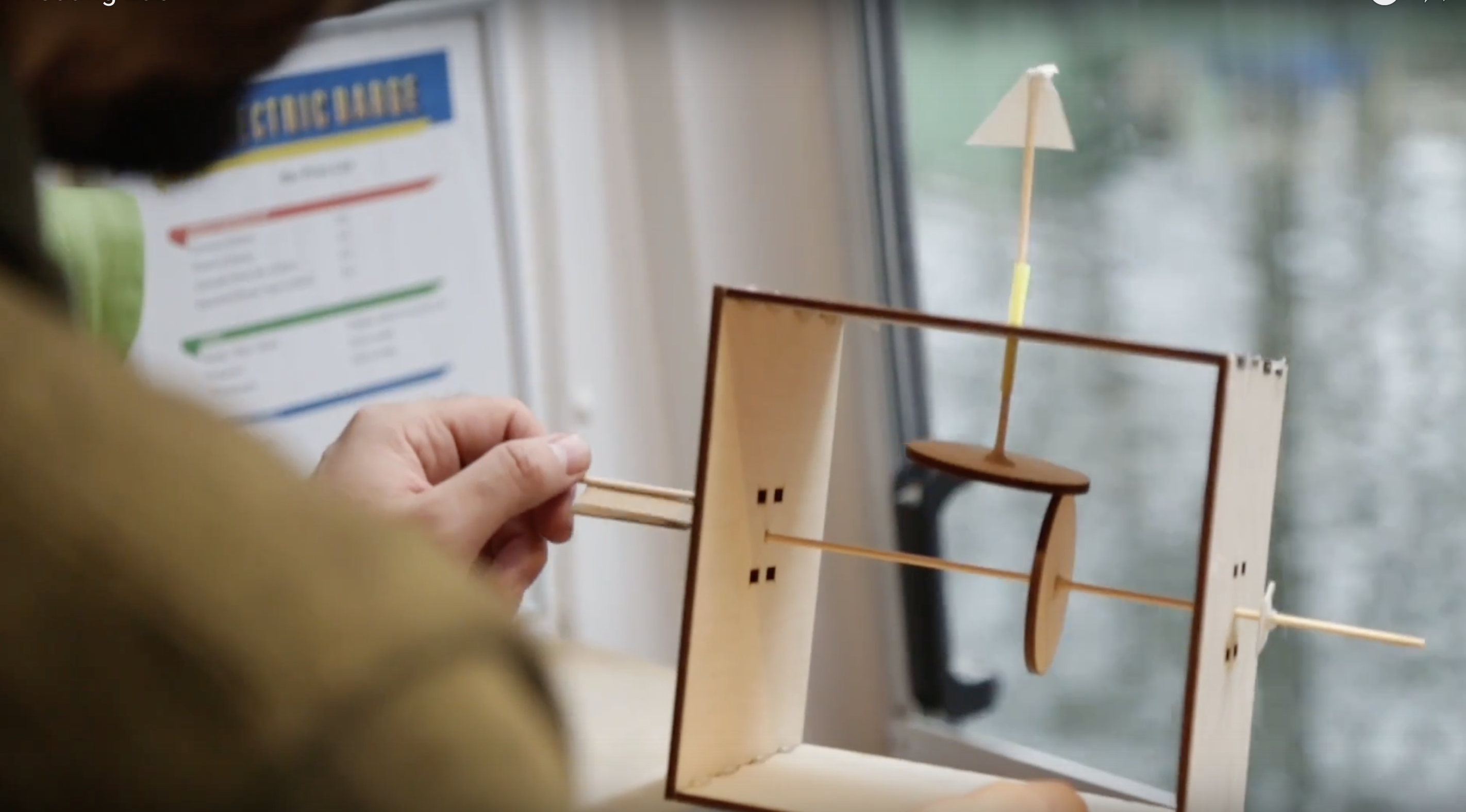

For the Lloyd’s Register Foundation “Grand Challenge: Thames, Safest European River by 2030” in partnership with Royal National Lifeboat Institution, we had to imagine a way to make London’s river a safer place.
RNLI invests a lot of effort in bringing different communities closer to Thames’ banks. They struggle to do so while educating the population to be more confident and safe around the river tidal’s environment. Moreover the city is growing and it’s taking more and more space around the bankside.
We analysed the current situation and after stakeholder mapping, we found out that there are many actors involved along the Thames’ path. Each one of them is operating in a different area of the river ecosystem but they were not communicating between each other.
We seized this opportunity as we wanted to make this conversations happen around one focal point: water safety.
That’s when the Floating Lab was born.
The Floating Lab is an educational and community project that uses design and technology to bring people closer to local waterways and educate about water safety.
The Floating Lab is a repurposed boat that travels along the river Thames; it connects key stakeholders along its journey and engages with users belonging to different communities.
![]()
RNLI invests a lot of effort in bringing different communities closer to Thames’ banks. They struggle to do so while educating the population to be more confident and safe around the river tidal’s environment. Moreover the city is growing and it’s taking more and more space around the bankside.
We analysed the current situation and after stakeholder mapping, we found out that there are many actors involved along the Thames’ path. Each one of them is operating in a different area of the river ecosystem but they were not communicating between each other.
We seized this opportunity as we wanted to make this conversations happen around one focal point: water safety.
That’s when the Floating Lab was born.
The Floating Lab is an educational and community project that uses design and technology to bring people closer to local waterways and educate about water safety.
The Floating Lab is a repurposed boat that travels along the river Thames; it connects key stakeholders along its journey and engages with users belonging to different communities.

During the day the Floating lab runs educational activities. At night and weekends the boat hosts events such as mudlarking sculpture group, seaweed crochet nights, tidal concerts and hackathon.
The boat will equipped with interactive installations, biology experiments displays and has a modular furniture that can adapt to each activity.
![]()
We initially focussed our attention to design a new curriculum for the Floating Lab. Our curriculum is based on the Project Based Learning teaching method, in order to offer the most immersive and hands on experience to pupils. We decide to involve pupils belonging to key stage 1 and 2.
Matching the National Curriculum Learning goals we also wanted to offer more holistic activities that would integrate design thinking, engineering, technology, arts and crafts.
These subjects are especially effective to make the children enquire more and feel more confident about their learning process.
We tested this curriculum in a one-day workshop hosted by the Floating Classroom that included two activities.
The boat will equipped with interactive installations, biology experiments displays and has a modular furniture that can adapt to each activity.

We initially focussed our attention to design a new curriculum for the Floating Lab. Our curriculum is based on the Project Based Learning teaching method, in order to offer the most immersive and hands on experience to pupils. We decide to involve pupils belonging to key stage 1 and 2.
Matching the National Curriculum Learning goals we also wanted to offer more holistic activities that would integrate design thinking, engineering, technology, arts and crafts.
These subjects are especially effective to make the children enquire more and feel more confident about their learning process.
We tested this curriculum in a one-day workshop hosted by the Floating Classroom that included two activities.
Pollution Automata
Initially we invited the pupils on the deck to carry out an observation activity. To aid them we designed cards about the canal’s fauna. We would also prompted them to observe the environment these animals were living in. The children immediately spot the pollution.
In the second part we asked them to materialise their observation in an river bird automata that would fight the pollution.
This activity was concluded with a presentation of their work through storytelling.
![]()
![]()
Initially we invited the pupils on the deck to carry out an observation activity. To aid them we designed cards about the canal’s fauna. We would also prompted them to observe the environment these animals were living in. The children immediately spot the pollution.
In the second part we asked them to materialise their observation in an river bird automata that would fight the pollution.
This activity was concluded with a presentation of their work through storytelling.

Persona Brainstorming
In the second part we asked them to “help” different users of the river to be more safer around the waterways. We used a fast idea generation technique with the use of persona cards. We designed a special deck for them.
Afterwards they had to discuss their ideas amongst a group, by building on each other idea.
![]()
In the second part we asked them to “help” different users of the river to be more safer around the waterways. We used a fast idea generation technique with the use of persona cards. We designed a special deck for them.
Afterwards they had to discuss their ideas amongst a group, by building on each other idea.
